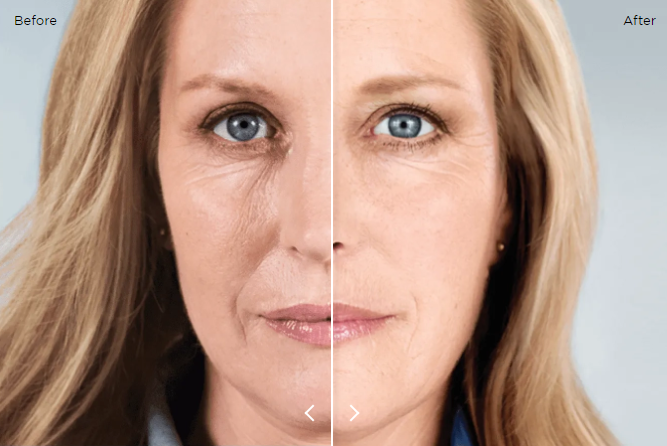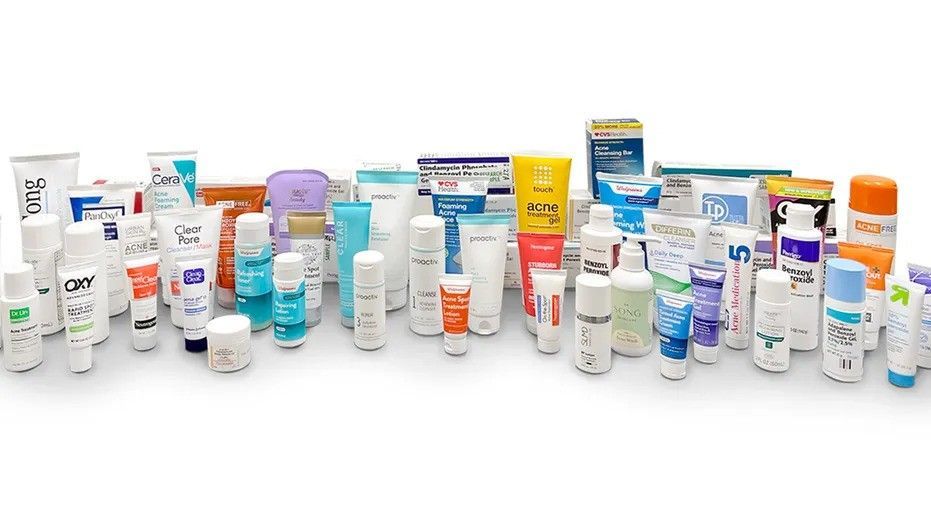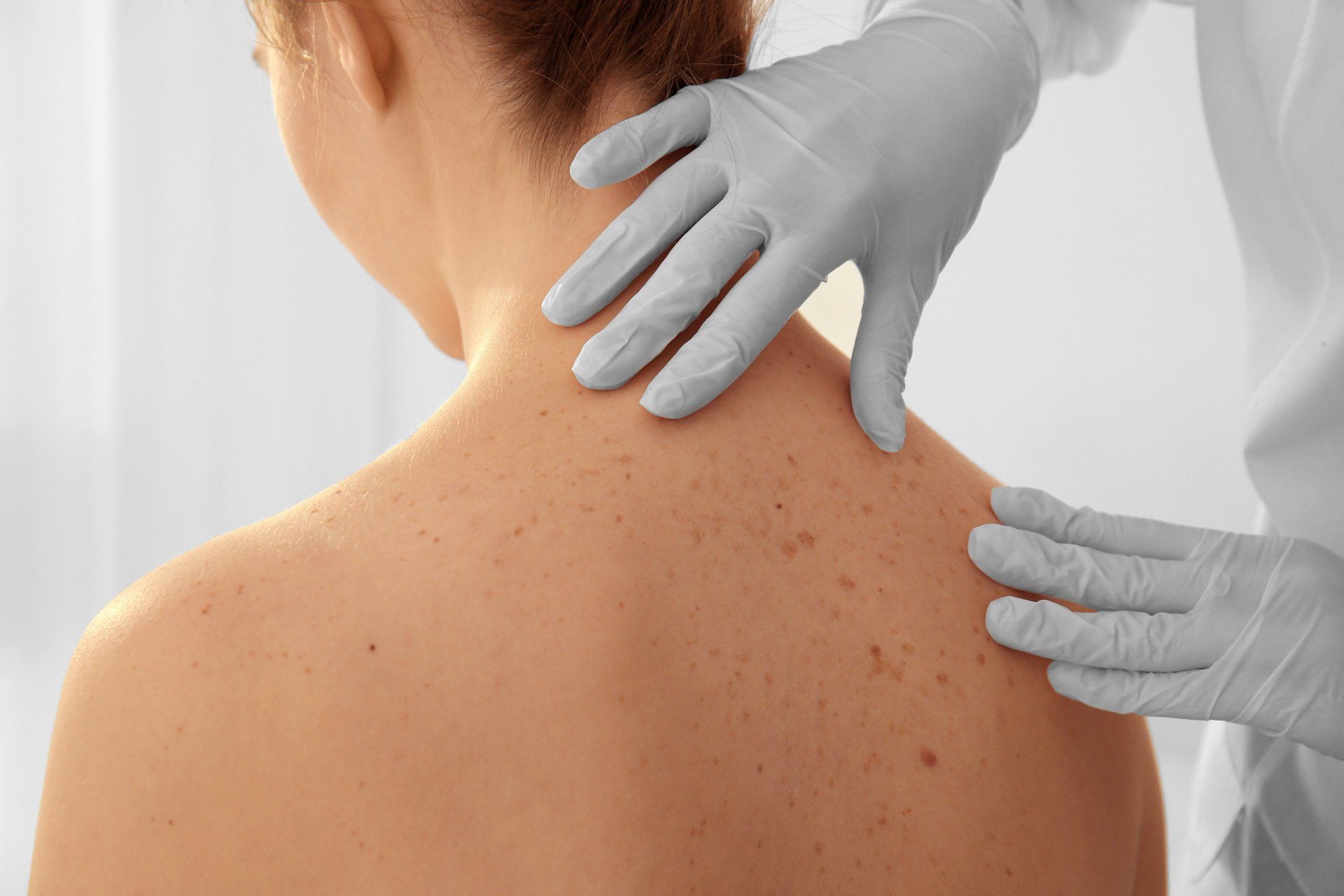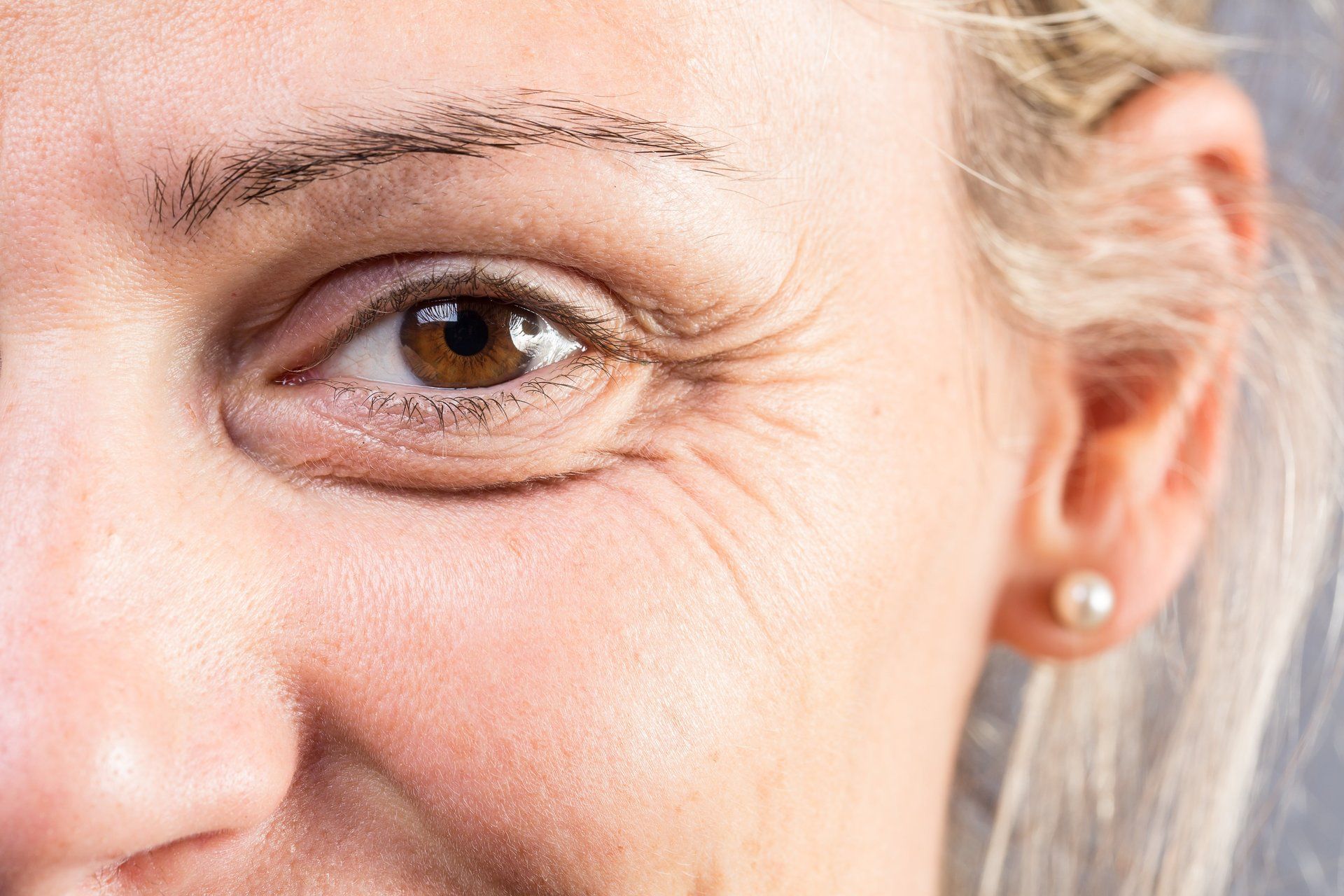
What’s new with Sculptra
Sculptra is not a filler- but a product that is injected into our skin (generally on the face) to stimulate collagen production. It consists of PLLA, which is the ingredient found in many of our absorbable sutures. This is a product that has been around for a long time and is well tolerated by our bodies. When collagen is stimulated, it adds volume to the undersurface of our skin and also makes our overlying skin appear younger and fresher because of a better supporting structure. This is often referred to as a Sculptra “glow”. The extra volume lessens folds and wrinkles to create a more even, level surface. Sculptra has also been used “off label” to improve skin on the body, such as on the chest or buttocks.
One of Sculptra`s benefits is that it lasts longer than most fillers. Typically, a patient needs 1 vial (bottle) per decade of life. So, a patient in their 50s would need five bottles given at monthly intervals. Most treatments start with 2 vitals to accelerate results. An annual touch up vial is recommended thereafter for maintenance.
So…what’s new??? In the past it was felt that Sculptra needed to be reconstituted 48 hours ahead of an appointment. We now know that it can be injected immediately at a visit; with preparation at the time of the visit. There is no need to postpone treatment or to call 2 days in advance for an appointment. We also won’t take a deposit; since it isn’t being prepared for you prior to coming in.
Please give us a call to come in for your treatment! We look forward to seeing you.

A few summers ago, we worried about spray sunblocks containing the cancer causing chemical: Benzene.
This week we learned that this ingredient is found in many over the counter benzoyl peroxide acne products. Brands tested and found with dangerously high levels include Clinique, Target’s Up & Up, Proactiv, PanOxyl, Walgreen’s acne soap bar, and Walmart’s Equate Beauty. FDA guidelines allow up to 2 parts per million (ppm). Valisure Testing Laboratory found up to nine times that amount in some treatments. These levels jumped significantly when the products were tested at higher temperatures as if stored in a medicine cabinet in a steamy bathroom. Proactiv’s 2.5% benzoyl peroxide cream contained as much as 1,761 ppm of benzene during testing; A similar cream from Target reached 1,598 ppm; Clinique’s hit 401 ppm. Clearasil 10% BPO initially tested just at the FDA level but jumped to 308 ppm.
The benzene found in sunscreen was an impurity that came from contaminated ingredients. The benzene in BPO comes from the benzoyl peroxide itself. BPO can break down and form benzene.
Valisure’s testing also examined benzene in the air surrounding acne treatments. An unopened Proactiv product leaked high levels when kept at 104 degrees F; the temperature of a hot shower.
When testing was done with salicylic acid (another acne ingredient found in OTC products) elevated benzene was not found.
So…what to do? I don’t recommend BPO for acne, but for an entirely different reason. Although an excellent treatment, these products can permanently bleach fabric. I don’t want someone to ruin their clothing, bedding, towels, etc. We have many wonderful topical treatments for acne by prescription. The Retin A family is always expanding, we have topical tazarotene, topical antibiotics, Dapsone gel, etc. We have excellent oral medication to treat (and cure) acne and many office treatments to use as adjuncts.
Call us to schedule your appointment and get a custom program for your needs!
Joyce Davis MD
212 242 3066

Getting ready for the Holidays can look different for everyone. Don’t stress about your looks, let us help you look your best this holiday season. With just one hour, we can help freshen your complexion and make you look younger!
One way is by microneedling. This procedure involves using a sterile brush to remove the top layer of your skin. It can be done either with PRP (platelet rich plasma- the better and stronger way to enhance results) or with hyaluronic acid (a cheaper option). The skin will need to heal for a week before it is ready for “showtime”. Unwanted pigmentation, superficial wrinkles, and acne scars will fade or be minimized. Fresher, newer skin will result. One treatment is enough for most people, but for stubborn pigmentation a series of 2 or 3 sessions may be necessary. We offer package deals and are happy to give you more information when you call the office to book your appointment.
Another great way to look your best this holiday season is with fillers. Fillers have multiplied….and each company has their own rewards program. There’s no excuse to not get 1 or 2 syringes to look your best and youngest version of yourself before party season starts. For the 50+ age group, Dr. Davis injects filler on the cheekbones (to lift) and in front of the ears (to pull back). Expect treatment to hold for about 6 months. Many of our fillers are on special promotion right now for the holidays. Again, at no cost, join the rewards group from the company of your filler for additional savings/fee reduction. There are also great deals for botulinum toxins. These are usually injected to relax forehead lines; these can also be used to decrease perspiration. How nice not to sweat for 6 months and have no underarm stains on your clothes! You will look relaxed in the midst of your hosting and party mayhem. No one will know!

Jill Biden went for Moh’s microsurgery. What is that? It is an outpatient type of skin cancer surgery. It is done under local anesthesia in a facility where there is an operating room and laboratory for simultaneous examination of all skin removed. If a section is positive for skin cancer then additional tissue is taken until clear borders are reached. This technique ensures full removal of certain skin cancers (generally basal cell and squamous cell carcinomata of the face) with a minimum scar.
Typically a skin biopsy is done first, and you would only go for Moh's microsurgery if skin cancer is diagnosed.
As part of your new year’s resolutions you should remember to get a full body check for skin cancer. Many patients have skipped this needed annual exam during covid and are coming in with many more skin cancers than typical. In between checkups if you spot anything crusting, bleeding, or changing color you should call the office to come get it examined right away. Or, if on a weekend, you can book an appointment on our web site TheManhattanDermatologist.com or with ZocDoc. Skin cancer is curable when caught early. If neglected, it is more complicated to treat.
Daily wearing of SPF 30+ is also recommended on all skin exposed to sun. This means the face and in warmer weather the neck, chest, arms, back, and legs. Too many patients still think that sunblock is just for the beach.

2.New drugs to treat Vitiligo, Alopecia Areata, Psoriasis, and Atopic Dermatitis. My accountant wonders why every time he turns on the TV there is a commercial for a dermatology drug. The JAK inhibitors, both topical and oral have taken over dermatology.
3.Approval of Daxxify, the longer lasting Botulinum toxin. Your treatment will last for 6 months. Better than a gel manicure. This should be available for our use early in 2023.

1)The latest trend in Botox Is to use less medication; meaning lower doses and lower prices. This creates a more natural look and still relaxes the expression lines we so hate.
Alle, the maker of Botox has implemented a new suggested dosing. Sixty-four units is the suggested full face treatment dose. A full vial of Botox contains 100 units. For older patients, with more extensive and deeper lines, dosing closer to 100 units may still be necessary between treatment and touch up. For younger patients, whose lines aren’t as “etched in” the lower total dose may be sufficient to treat and prevent progression to deeper lines. The three facial areas (frown, crow’s feet, and forehead) can all be treated with the 64 unit dose.
2)We now have FDA approval of Daxxify; the longer lasting (six to nine months) botulinum toxin treatment. Approval for new drugs was held up during covid, but those in the know have been waiting patiently for this to become available. Results are seen as early as one or two days after treatment and typical duration of treatment was six to seven months. No adverse effects were reported. We will let you know when this will be available for you to have.

The best sunblock is one that you will use regularly. Dermatologists recommend daily use of SPF 30+ on all skin not covered by clothing or your mask. It should be applied on a year round basis; not just when sitting by the pool or when on a beach or a boat. On days when you are near that is water resistant, so that with excess sweating/swimming/reflection it remains on your skin.
For faces I do not recommend a spray. There’s too much risk of danger to your eyes if the spray enters. A lotion or stick is best for the face. A stick works exceptionally well for athletic individuals, since it won’t move with sweating, and is great for lips. (Think Herpes prevention.) Choose an oil free option if you are acne prone. A new product from Elta MD is a touch up balm; UV Stick Broad spectrum SPR 50+. This product can be reapplied throughout the day without disturbing your makeup and fits in a purse! This is the 2022 equivalent of repeatedly “powdering your nose”.
To add to sun protection of your face, a wide brimmed hat works well. A baseball cap is stylish- but only protects the top of your forehead- which is not sufficient.
For the body I do love an SPF spray. The new cans spray in any direction and the sunblocks feel lightweight on the skin, even when waterproof. You can spray your neck, arms, legs, back, etc. quickly and efficiently. I know there was the Benzene scare last summer. The sunblocks for sale in 2022 are all Benzene free.
Many facial sunblocks contain anti-aging peptides, niacinamide to reduce redness, antioxidants, hyaluronic acid, and other ingredients which enable them to multitask. Pick a tinted one and let it become your makeup!

First, I am quoted in the May, 2022 issue of Elle Magazine. The article is on hair shedding- and lists many causes for it. Covid 19 infection should also be included. The take home message is that if you are losing massive amounts of hair, it could be more than a cosmetic concern. You should make an appointment to come in for a visit to search for the hidden medical cause, (think thyroid problems, anemias, etc.) which will prevent your hair from growing back unless identified and treated.
I will also be quoted in an article in the July/August 2022 issue of Good Housekeeping magazine. I haven’t seen the article yet- but it is also on hair loss.
There is also much media attention to a newly approved drug for treatment of Alopecia Areata; an autoimmune cause of hair loss Unlike hair shedding, hair loss in this condition is patchy; often with large areas of shedding in one area. Bald areas can be coin shaped or larger, and can even involve the entire scalp. (This is probably what Jada Pinckett has when she talks about having “alopecia”.) Until now treatment has consisted of injecting cortisone into the affected areas on a monthly basis until the hair regrows. When the area is significantly large this becomes difficult. I have treated people with the home laser (Theradome helmet) with good results to supplement office injections. The newly approved medicine is a JAK inhibitor and is taken orally. Due to side effects this medication is generally reserved for patients with loss of 50% or more of their scalp hair.
We are also implementing the second generation of PRP injections for treatment of hair loss. Come in for a complementary PRP consultation to find out how this works. There will still be blood drawn during your visit and reinjected back into your scalp . The technology is now different and a gel matrix ensures that the growth factors from your blood remain in your scalp for at least 1 full week. Previously the factors were absorbed much more quickly. Results have been excellent’ especially for androgen caused hair loss in both men and women; but PRP works to treat all types of hair loss.

https://www.elle.com/beauty/a39815062/hair-shedding-essay/
It’s Totally Okay To Shed
Seeing a clump of hair swirling down the drain can be scary. But it turns out daily hair loss is normal and rarely something to stress over.
BY CLAIRE STERN
APR 27, 2022
DESIREE MATTSSON
I’ve been a champion hair shedder for as long as I can remember. A small girl with a disproportionately large mop of hair, I recall repeatedly breaking my mom’s fine-tooth combs and meekly asking my dad if he could snake the drain. Again. And while stylists would often tell me how lucky I was to have such thick hair , I often felt anything but.
My shedding only seemed to intensify when I became an adult. It is now pretty much constant and incessant. Whenever I brush my hair or blow it dry with my Dyson, I’m greeted with a fistful of my own tresses. Countless roommates—and a few significant others—have been moved to comment on my abundance of strays, impossible to miss as they’re strewn across the bathroom floor.
There’s a reason some men, in particular, are startled by the volume of strand shedding. For one, women tend to have longer hair than men, and if you have longer strands, “it can feel like there’s more shedding happening because the hair ball looks bigger,” says Ronda S. Farah, MD, a dermatologist based in Minneapolis. New York City dermatologist Joyce Davis, MD, concurs: “Circling in the drain, one long strand of a woman’s hair is going to look like more than three short hairs from a guy’s scalp.” (It should be noted that there are a number of men who prefer that their SOs have long hair, so why judge them for shedding it? Hypocrisy at its finest.)
Yet I’m assured shedding is totally normal. And because my hair is so thick and grows quickly, the loss is routinely replaced, Davis tells me. “Young women with very thick hair have the metabolism to keep up with [the shedding],” she says. “They make hair, they lose hair; they get ahead of it.”
According to Davis, a typical amount of daily shedding is up to 100 hairs. “If you’re losing closer to 300 hairs a day, you should probably get it checked,” she cautions. Although that’s not to say you should count every last strand obsessively. “Be reasonable about it: See what’s in your brush; see what’s on your clothing; see what’s on your pillowcase; see what’s in the shower.”
If you do note a slight uptick in shedding, it’s typically not cause for alarm, says Megan Robinson, owner of Pearlita , a salon in New York City’s Nolita neighborhood. She believes increased shedding can be seasonal and often escalates in the summer. (There’s also evidence that hair may grow faster during warmer months, presumably because heat boosts blood flow to the scalp. So, in theory, new growth would keep pace with summer shedding.)
Another common cause of heightened shedding is an imbalanced diet, particularly a protein deficiency. “Hair is protein, but it’s the least important protein your body makes,” Davis says. So if you’re not eating enough protein, she explains, hair gets short shrift because your body prioritizes using protein reserves to maintain vital functions—not to nourish hair. She recommends taking a multivitamin with iron and eating at least two sources of amino-acid-rich protein daily—ideally from an animal source—to ensure that a nutritional deficit isn’t the root cause (pun intended) of increased shedding.
“Everybody is shedding hair all the time, and it can vary day to day.”
—Ronda S. Farah, MD
Other conditions that can intensify shedding: anemia, thyroid abnormalities, hormone swings (post-pregnancy or during menopause), certain medications, and overstyling that causes hair to break off or follicles to release strands en masse. (The latter is called traction alopecia and can be the result of wearing very tight styles, such as braids, for extended periods of time.) Illness, surgery, or a stressful life event can trigger a condition called telogen effluvium, in which up to 50 percent of the hair prematurely enters the shedding phase. Fallout from telogen effluvium typically occurs two to three months after the diagnosis or event in question, and the increased shedding may last for up to six months, says Cleveland dermatologist Shilpi Khetarpal, MD.
The good news? These conditions can all be addressed, and most are temporary. A doctor can prescribe treatment for an underlying condition, but there’s a lot you can do at home to boost new growth. Dermatologists frequently recommend minoxidil, such as Hers Minoxidil 2% Topical Solution , an over-the-counter drug applied topically to the scalp to increase follicle size and extend the growth phase. There are also a variety of drug-free scalp treatments that nourish the skin and boost blood flow to follicles, contributing to overall healthier hair. Try Nutrafol Growth Activator , Augustinus Bader The Scalp Treatment , or Virtue Flourish Density Booster.
Meanwhile, keep the shower (and the drain) cleaner with this easy trick from Robinson: “Brush your hair with a mixed-bristle brush before you shower,” she says, recommending the Crown Affair The Brush No. 001. “That way, all the hair that would otherwise shed into the drain comes out on the brush instead, keeping your shower (and your partner) much happier.”
And the next time you discover a tangle of strands on your pillow or bathroom floor and feel like freaking out? Remember what Farah said to me: “It’s normal to shed hair. Everybody is shedding hair all the time, and it can vary day today.” So take a deep breath, toss it in the trash, and carry on.

More than half of women over age 50 will experience hair loss according to a study published this month in Menopause. Although hair loss is widespread and accepted in men, not much has been published about it in women. What is exciting is that there are new treatments for this problem, which is depressing for many women.
When women present with hair loss it is complicated; since there are different patterns of loss and many reasons for this. A consultation with a dermatologist interested in treating hair loss is the first step. A thorough history is obtained to check for preceding events such as recent surgeries, dietary changes, etc. which could account for the hair loss. There are also hidden medical causes of hair loss, such as various types of anemias, autoimmune diseases, thyroid problems; etc. I typically order a panel of blood tests for my female hair loss patients to check for these (and other) medical problems so that they are not overlooked. Correction of an underlying problem usually stops the hair loss and hair regrows.
We have a few new and exciting ways to treat hair loss; no matter what the cause.
Home lasers are effective, lightweight, wireless, and comfortable. They resemble a bicycle helmet. You would wear it for at least 20 minutes twice weekly and it has been effective in stimulating hair follicles to regrow hair. We have one on display in out waiting room for you to see.
PRP injections into the scalp are also effective for regrowth of scalp hair. I was one of the first dermatologists in Manhattan to offer these all-natural treatments; which use growth factors harvested from your own blood. This is an office- based procedure. I draw your blood and spin it down in a centrifuge. I then separate out the platelets and reinject the growth factors into areas of thinning on your scalp. Several treatments are needed. I have implemented several updates to the protocol as our knowledge progressed. I now use larger (almost double sized) tubes, to give you almost twice the benefit with each treatment (at the same price as before). I also “double spin” the blood to enhance results. We offer free PRP consultations, so schedule a visit to see if this can work for you.
Don’t hide your problem---come in to get it treated!
